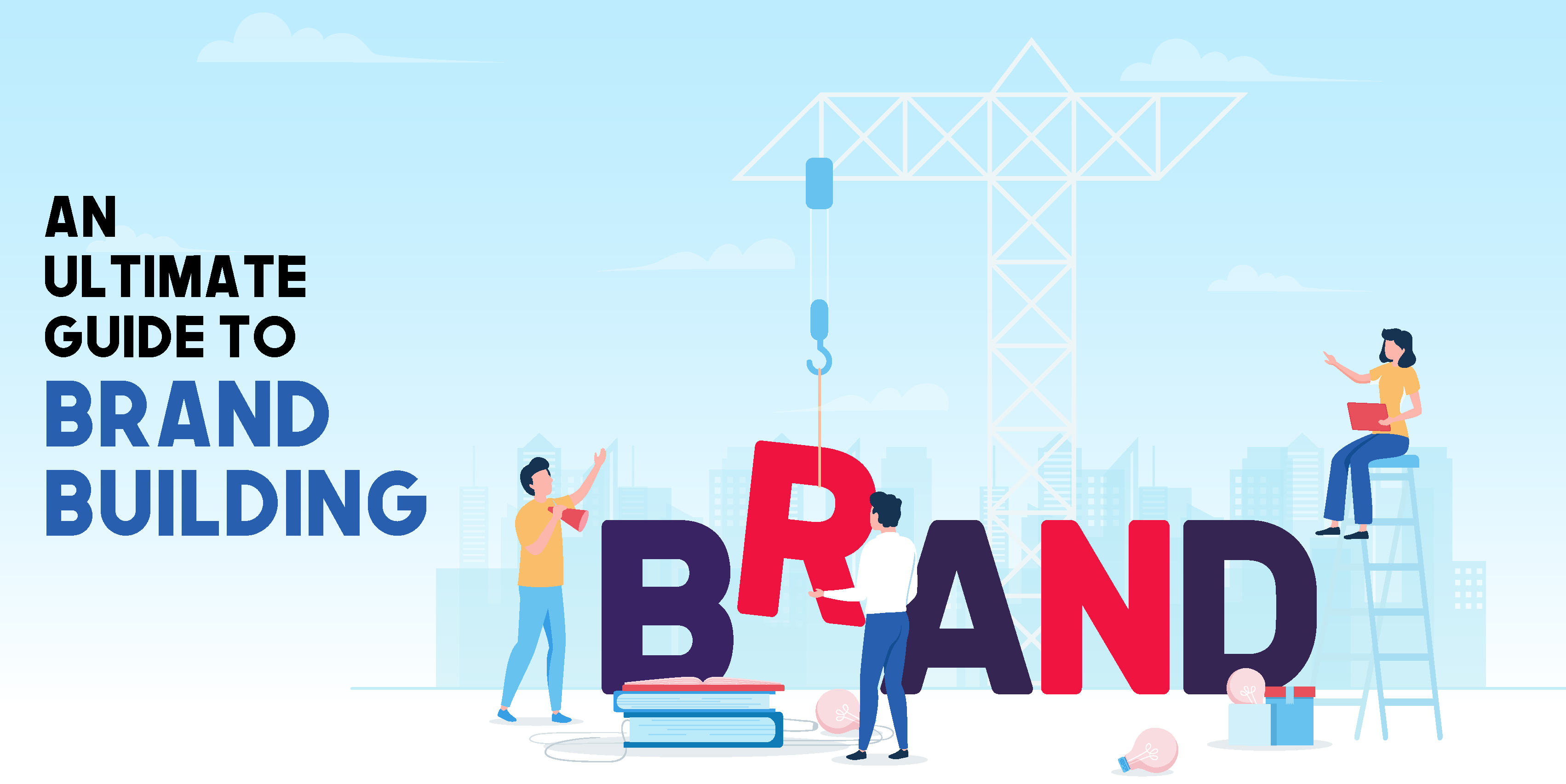Products never remain
‘mere products’. Brands take them out from the shells, making them an essential component in customer’s day to day life.
Certain
brands become so powerful that, they take over whole of the market. Certain products and services are often known by its name. Why is that so? Photocopying of papers are generally called Xerox. But how many of you know that Xerox is just a company who happened to manufacture first ever photocopying machine?
Today, brands are the drivers of sales. Strong and
powerful brands often have loyal customers in their pockets. Studies prove that, 59% of customers prefer to buy new products from brands familiar to them.
How do you build a brand? Branding isn’t all about a cool logo and advertisement. When it comes to building your brand, there are three vital B’s you need to understand about —brand,
branding and brand identity.
Let’s take a quick look at the basics of these three B’s, before striding into brand building.
What is a Brand?
Before comprehending what branding and brand building is, it is important to understand what a brand is. With a lot of explanations available across internet, brand has become a term, that revolves around humongous chaos. Some of the explanations that search engines might provide you are;
‘Brand is the emotional and psychological relationship that you have with your customers.’
‘A product manufactured by a particular company under a particular name.’
‘The name, term, design, symbol, or any other feature that discern a seller’s product from other sellers.’
‘It is the idea or image of a specific product or service that consumers connect with, by identifying the name, logo, slogan, or design of the company.’
All of the above mentioned definitions are indeed answers for the question, what is a brand. But, all of them are only partial answers.
In addition to customer’s overall perception, brand is the personality of a business.
What is Branding?
Branding is the act of shaping a unique and distinctive brand; it’s the dynamic exercise of bringing a brand to life.
It incorporates process of researching, developing and applying an idiosyncratic feature to your organization, so that consumers can associate your brand with your products or services. Branding is important; apart from making a memorable experience and impression in customer’s mind, it also gives a clear portrait of what to anticipate from your brand.
Branding helps in defining points of parity and points of difference, thus differentiating your brand from your competitors.
When branding your business, start small and remember to focus on your target audience first. With time, your brand loyalty may grow enough to expand your reach.
What is brand Identity?
Brand identity is the collection of all elements that a company creates to portray the right image to its consumer. Brand identity is different from “brand image” and “branding,” even though these terms are sometimes treated as interchangeable.
Brand identity includes visible elements of a brand, such as colour, design, and logo, that helps to identify and distinguish the brand in the minds of consumers.
Just like your personal identity makes you uniquely different, your brand identity is the special constituent of your business that sets you apart from every other competitor.
Now that we have understood what the three B’s of Brand Building are, it is time to move on to the next step.
What is Brand Building?
Brand Building is generating awareness, establishing and promoting business using strategies and tactics. It enhances the brand equity using advertising campaigns and promotional strategies.
At present, augmentation of brand building can be done through various digital marketing activities including;
User Experience
SEO
Content Marketing
Social Media Marketing
Email Marketing
Paid Advertising/ Pay Per Click
These channels aid in creating brand awareness among the target market.
Building a brand cannot happen overnight; many strategic and purposeful ordeals are associated with it. Let’s go step-by-step and understand how to build a brand.
- Determine your target audience
‘You can’t be everything to everyone.’
The foundation for building a brand starts with identifying and determining target audience. If the brand doesn’t resonate with your audience, it wouldn’t lead to awareness, recognition, trust, and revenue.
While building brand, it is imperative to understand who exactly are we trying to reach. The key message should be tailored according to these targeted market.
Crystalize a picture of your intended consumers, and fathom how to create a brand identity that
they can understand and relate to. Brand building relies heavily on understanding the buyer persona.
Narrowing down audience will ensure that the brand message comes across crystal clear to the intended receiver. Recognizing the target audience for your services or products is a significant task. It is all about right person consuming your content, clicking on your ads, opting into your email list, etc.
Thus, determining ideal audience for your business will upkeep the general digital brand strategies. It’s definitely an important first step!
- Establish a Brand Mission Statement
Why did you start your business and what is its purpose? Answering these questions are the key to build a perfect mission statement.
Mission statement impeccably defines the purpose and passion of an organization. In essence, you have to craft a clear expression of what your company is most passionate about.
Before building a brand that the target audience trusts, you must have a clear idea of the values that the business possesses and provides. It will reflect every aspect of your brand building strategies. Everything including your logo, tagline, voice, message, and personality should resonate that mission.
- Competitor Analysis
It is indisputably not advised to imitate exactly what big brands are doing in your area of expertise. But it is vital to keep a track of what are they up to. The ultimate goal is to differentiate your product from competitors.
It is your obligation to convince your customers to buy your product over your competitors. Hence, it is critical to keep a track of their strategies and campaigns to do better than them.
Research about your key competitors and understand how well they have gone about building a brand name.
- Outline point of differentiations
Your product, service and benefits solely belong to you.
There would definitely be points of parity with your competitors. Because most of the products in the market aren’t unique. Most products are a repetition of its already trialled versions.
Focus on the point of differentiations that you have to offer over your competitors. List out the benefits that solely comes with using your product or service. It is important to understand that, it isn’t a mere list containing qualities and features of your product. But these are the values that you offer to your customers through your brand.
- Create a brand logo and tagline
It is the visual properties of a brand that crosses our minds upon hearing its name. Visual elements are strong identity building factors.
The most important essence of brand building process, is to create a brand logo and tagline for your company. A strong logo and tagline will remain intact in the minds of audience for a long time.
Why do people from 90’s still remember the song of Vicco Turmeric cream? The answer is simple – the brand was able to create a strong positioning in the minds of audience.
For building a strong brand identity, logo and tagline should be enduring.
Here are the five essential characteristics of a great logo.
Simple
The simplest logos are the ones people remember the most. Complicated logos are most often forgotten by the audience.
Scalable
A great logo should be simple and scalable. Stretching up or down shouldn’t make it look bad.
Memorable
The success of a logo relies on its memorability factor. A great logo should be impactful. It should be able to capture audience attention and leave a positive impression in them.
Versatile
A logo is a brand element that keeps showing up on multiple platforms of communication. It is indispensable that your logo looks equally good on all platforms.
Relevant
Your logo design might be exceptional. But what if your logo is not relevant to your business? One of the qualities that a great logo must possess is relevance. The logo should reflect the type of business that your brand is into.
- Form your Brand voice
Brand voice relies heavily upon your mission, target audience and the industry your business belongs to.
It is how you communicate with your customers and how they respond to you. Brand voice could be;
Professional
Service-oriented
Friendly
Authoritative
Technical
Informational
Promotional
Conversational
Eventually, you should choose a brand voice that makes sense and resonates with your target customers. Because it is all about connecting with your target audience.
- Build a brand message
When building a brand message, tell your customers concisely who you are. Use the brand voice that you have chosen to express your brand message.
Your message should be intricately associated with your brand. Make it as short as possible. But building a brand message goes beyond construction of a logo or tagline. It should define key aspects like:
Who you are
What do you offer
Why people should care
- Give prominence to your brand personality
Customers are not looking for another same old pancake mix company who offers the same as everybody else. Give something new to customers that might leave a positive impact and impression about the brand in their mind.
Customers are always up for new experiences and give them that.
Wondering how to make your brand unique? Give importance to your brand personality and make it stand out from other brands. Be consistent with your brand personality across all points of contact.
Brand personality can be as simple as the following:
A conversational voice in communication
Telling stories about real experiences
Describing your products/services in a quirky manner
- Stay true to your brand building
Unless you decide to change your brand into something more effective based on consumer response, maintain consistency. A fluctuating brand would easily be forgotten by its audience.
Key idea is to maintain consistency throughout. Once you have chosen a brand message, brand voice and personality, stick to it. Do not change it frequently, else people wouldn’t recognize your brand.
Now that you know the steps for building a brand, what are you waiting for? Start working on your brand building right away and give it a face that your consumers cannot forget.




